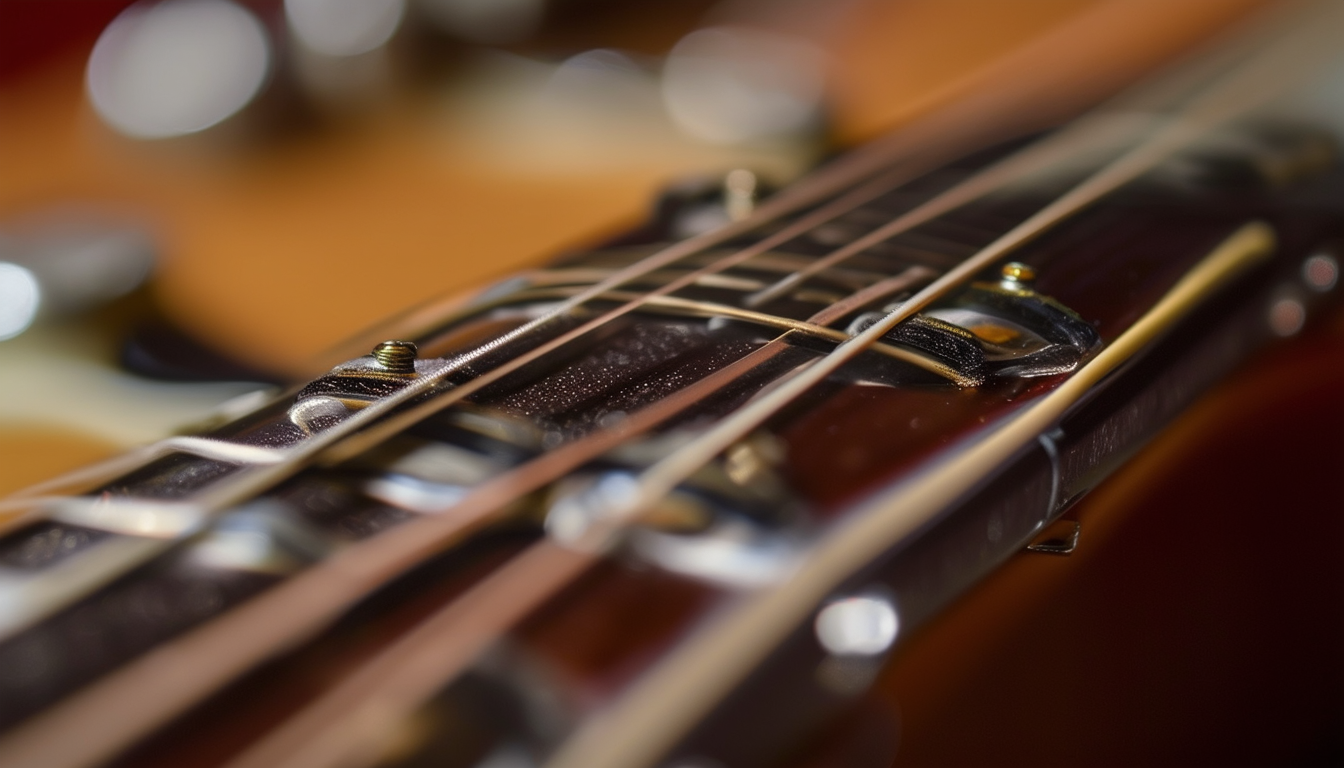Unlock the secrets to flawless guitar performance with our expert guide to perfect intonation setup.
Understanding Guitar Action: A Beginner's Guide

Unlock the secrets of perfect guitar playability with our beginner's guide to understanding guitar action.
What is Guitar Action?
Guitar action refers to the height of the strings above the fretboard. It's a crucial aspect of your guitar's setup and can greatly affect your playing experience. If you’ve ever noticed that your fingers have to press down harder on some guitars than others, you’ve encountered different guitar actions. Essentially, action determines how much effort you need to put into pressing down on the strings to produce a clean note.
The action is measured at different points on the neck, usually at the 12th fret. High action means the strings are further from the fretboard, while low action means they are closer. Understanding this concept is the first step towards mastering your instrument and making it truly your own.
Why Guitar Action Matters
Guitar action matters because it directly impacts your playability and comfort. If the action is too high, you’ll need to exert more force to press down the strings, which can be tiring and may hinder your ability to play quickly. On the other hand, if the action is too low, you might experience fret buzz, where the strings vibrate against the frets and produce an unwanted buzzing sound.
Having the right action can make a world of difference in your playing experience. It can affect your tone, your speed, and even your ability to execute complex techniques like bends and slides. In short, the right action can make playing feel effortless, whereas the wrong action can turn it into a chore.
High Action vs. Low Action: Pros and Cons
High action has its benefits, especially for players who use heavier strings or play genres like blues and slide guitar, where a bit more resistance is desirable. It generally offers a cleaner sound with less fret buzz, but can be tiring for extended playing sessions.
Low action, on the other hand, is favored by many lead guitarists and shredders who need to play quickly and effortlessly. It makes fast runs and intricate fingerwork easier, but can be prone to buzzing if not set up correctly. There’s no one-size-fits-all answer; the ideal action varies depending on your playing style and preferences.
How to Measure and Adjust Your Guitar's Action
Measuring your guitar’s action is relatively simple. You’ll need a ruler or a specialized action gauge. Measure the distance between the bottom of the strings and the top of the 12th fret. For electric guitars, a typical action might be around 1.5mm to 2.5mm. For acoustic guitars, it could be slightly higher.
Adjusting the action can be more complex and might require a truss rod adjustment, bridge height adjustment, or even nut filing. If you’re a beginner, it might be wise to take your guitar to a professional for setup. However, if you’re feeling adventurous, there are plenty of online resources and tutorials to guide you through the process.
Finding the Perfect Action for Your Playing Style
Finding the perfect action is a personal journey and can take some experimentation. Start by identifying your playing style and preferences. Do you play lots of fast solos, or do you prefer rhythm and chords? Do you like to bend strings or play with heavy strumming?
Once you have a clear idea of your style, you can start adjusting your action accordingly. Remember, what works for one guitarist might not work for another. Don’t be afraid to make small changes and see how they affect your playing. Over time, you’ll find the setup that makes your guitar feel like an extension of yourself.
